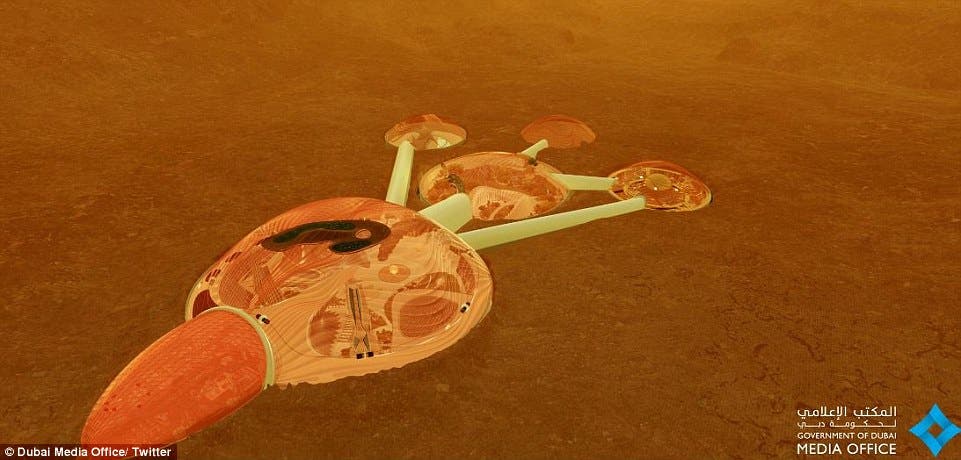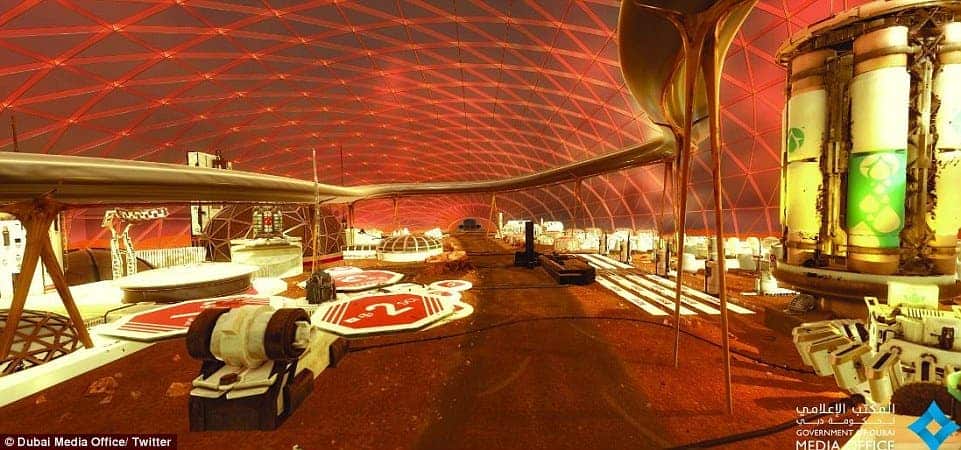The United Arab Emirates have their eyes set on colonizing Mars, too. This Tuesday at the World Government Summit in Dubai, UAE engineers presented a Chicago-sized concept city for the representatives of 138 governments to explore — the real thing, they say, will be built on the red planet by 2117.

Just forty years ago, Dubai was a tiny pearl-fishing village nestled on the Persian Gulf’s coast. Today it’s one of the most modern cities in the world, adorning the coast with its man-made palm islands. Now they got their sights on making an even better “mini-city and community” — on Mars.
While most of us are still holding our jaws from falling, Dubai’s ruler and vice president of the UAE Sheikh Mohammed bin Rashid Al Maktoum is confident that the project will be a success.

“Human ambitions have no limits, and whoever looks into the scientific breakthroughs in the current century believes that human abilities can realize the most important human dream,” said Al Maktoum in a statement.
“We aspire to great things, so my brother Mohammed bin Zayed [first president of the UAE and crown prince of Abu Dhabi] and I today decided the UAE will join the global effort to send humans to Mars.”
Setting up a city anywhere is a daunting task. Setting the first one on another planet requires nothing short of a monumental effort. Still, by spreading the work over one hundred years, the UAE have a lot of wiggle room in how they go about the task. The Mars 2117 “is a long-term project,” Al Maktoum said, adding that the first step is to create a strong culture of space travel in the Emirates’ younger generation — Universities all over the country are setting up special programs in space sciences and space exploration.

A specialized Emirati scientific team will handle the project, which Al Maktoum says will expand to include international scientists. The team will be tasked with developing faster means of transportation to and from Mars as well as colonial development — the first goal is to make the colony food and energy self-sufficient.
Some participants of the summit have expressed concern that this mission betrays the UAE’s anxiety to untie their economy from the oil and gas sector — which were hit hard by the recent price drops. But with other proposed Mars colonization missions getting a lot of criticism for their too ambitious goals and limited time-frames, UAE seems to have found a unique niche. This distant goal should give the UAE time to carefully prepare the operations and overcome any difficulties that arise. Still, the sheer length of the mission makes it hard to predict whether it will be successful or not — a lot of things can happen in a century.







